By Alex Trukan
The response to many teams trying to build up from the back is improved defending from the front as well as high pressing. This has challenged many teams in their way of preferred attacking strategy. Therefore, it has become increasingly important to use any additional solutions that could potentially help in building up from the back. One of the overlooked strategies is involving a goalkeeper in a more strategic and significant way. Goalkeeper offers useful support from the back which can potentially stretch the opposition’s shape and create opportunities to play in behind them. It also offers a relief from the pressure on centre backs and a method of switching play to the opposite side. There's a lot to consider when talking about how the goalkeeper supports from the back – angles, body position, receiving techniques as well as distribution.
One of the first key aspects is understanding when and why the ball should be played to the goalkeeper. One of the reasons might be to drag the opposition higher and create space in behind them. Another reason might be related to lack of options to play forwards, pressure on the ball as well as trying to slow down the tempo and gain physical recovery time. These scenarios as well as body position of the centre back on the ball (turning to face own goal) are triggers for the goalkeeper to adjust his position and offer support. .
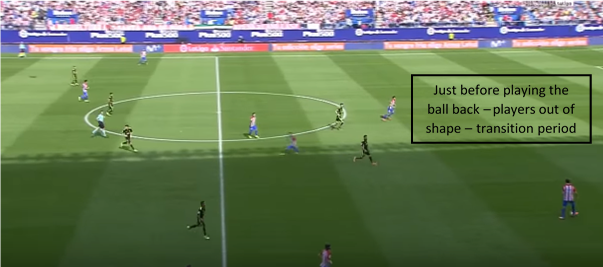
An important detail to consider is the supporting position of the GK, which should be on the angle, and away from the goal. His body position should be open to see the opposite side of the pitch and be able to switch the play if needed. The pace of the pass should allow the goalkeeper to play off one touch and prevent the nearest opposition player from intercepting it.
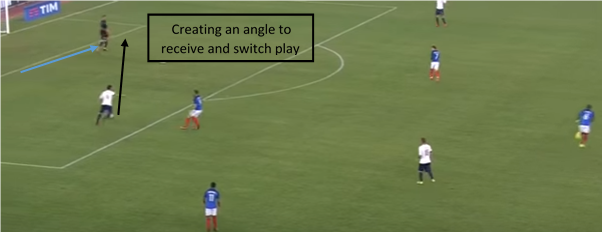
As soon as the pass is played to the goalkeeper, the team gains time to adjust their positions and take up starting shape. This is the preferred option when the team has the intention to play out patiently. From the opposite point of view, a pass back allows the opposition to adjust as well and get organised. This is why, if the opposition is not organised, the attacking team should try to exploit them quicker on the counter attack.
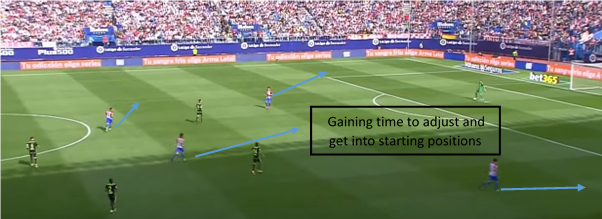
Playing the ball back will often create gaps between the opposition units. This happens if the team is not compact enough and the strikers’ unit goes to press while midfield and defenders’ units stay back. As the space is created behind opposition’s strikers, it might create an opportunity for the centre backs to drive forward or central midfielders to drop deeper and receive passes between the lines.
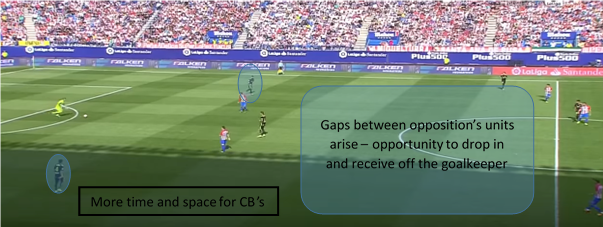
When the ball is wide, and the opposition presses high, it might not be possible to play the ball forward or sideways. In this situation it's crucial to use the goalkeeper to switch the play. The additional benefit of doing this will often be dragging one of the opposition strikers out of position to press and therefore creating more space on the opposite side.
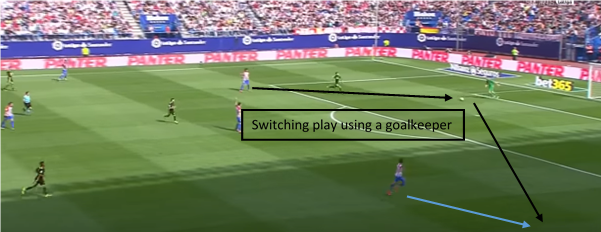
Another important time to use the goalkeeper is in transition periods. Upon winning the ball back if there is no opportunity counter attack and the opponent is counter pressing, playing the ball back creates extra time to reorganise. This will also prevent them from winning the ball back right away in a dangerous area.
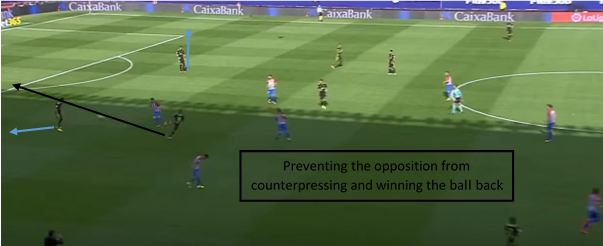
Despite all of the benefits associated with using the goalkeeper when playing out from the back, it is important to remember that the priority is to play forward or sideways. Therefore, players should consider all other options before playing it to the goalkeeper. On the other hand though, goalkeepers should become more proficient with their distribution as well as understanding on how to support play from the back. This might be reflected in training when goalkeepers join in the main part of the session and spend less time in specialized training.
By Alex Trukan, Development Coach, Nottingham Forest
@AlexTrukan


